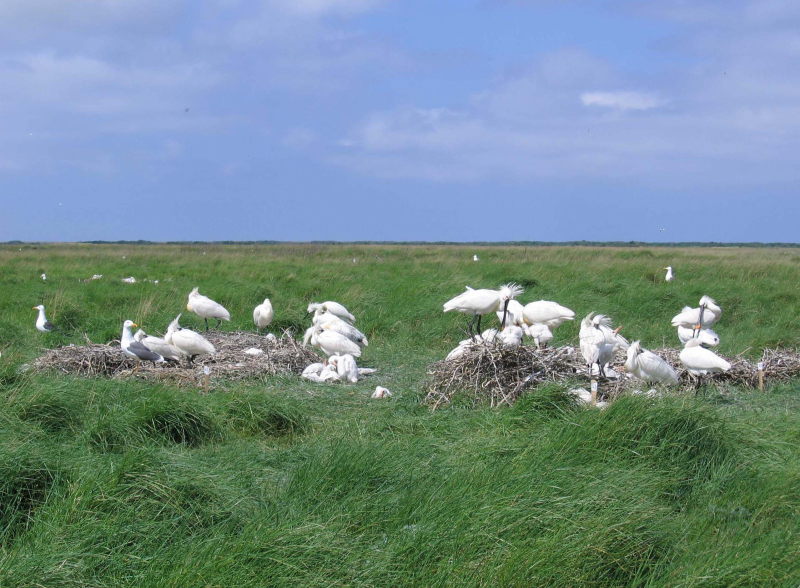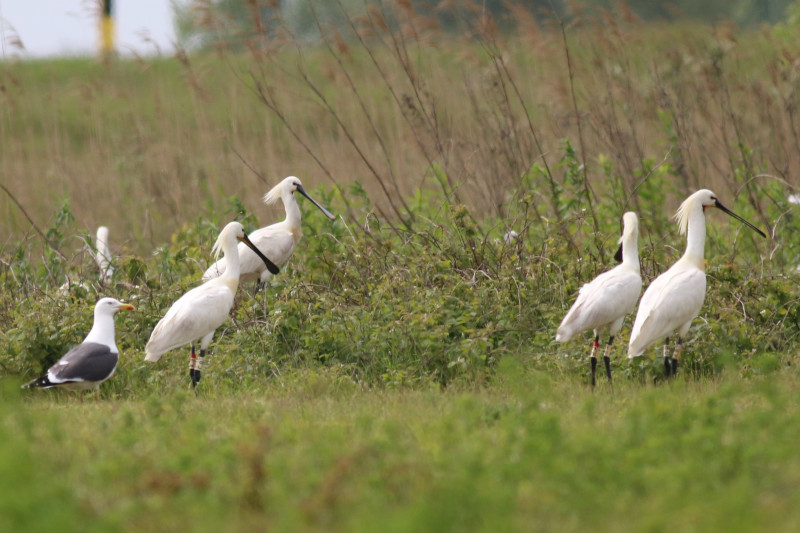Protection: how and why?
Spoonbills have been found in the Netherlands and surrounding countries for many centuries. Many (tens of) thousands of pairs must once have nested in our country. This is evident, among other things, from notes of the first ornithologists and reports of trade in thousands of young spoonbills in past centuries. From these, the picture emerges that there were large colonies in the huge marshes that our country used to have.
Why we want to protect spoonbills
Due to persecution and draining of marshes, the numbers of spoonbills went downhill; in the 1950s and 1960s the population collapsed even further due to large-scale use of pesticides in agriculture. By the 1970s the species was breeding in Europe only in the Netherlands, Spain and southeastern Europe. In 1969, a low of only 148 nests was reached in the Netherlands. Bans on the most harmful pesticides, improved legal protection and development of wetlands allowed the Spoonbill to recover. The Dutch population grew again to about 4000 pairs in 2021. Because the old colonies were threatened by foxes, the spoonbills discovered the Wadden Islands as suitable breeding grounds. From our country, the species colonised other countries again.
It is not yet time to sit back. The species is still exposed to several threats. Most visible are the victims of high-voltage power lines and hunting (for example still in France!). About this we receive reports and photos with some regularity. Less noticeable are changes in the habitat of the Spoonbill, such as the consequences of overfishing of shellfish and fish stocks, a problem known from our (Wadden) Sea and Delta region. We have also ‘exported’ this depletion of natural resources to the African wintering grounds of Spoonbills and those of many of our other breeding and migratory birds. Ringing studies show that the survival of the spoonbills wintering in traditional wintering grounds in West Africa is lower than that of those wintering in southern Europe.
The population in Spain and Portugal suffers greatly from water shortages that lead to drying up of foraging areas. This is due to excessive water use for agriculture and may also be a consequence of climate change. ‘Our’ Spoonbills also suffer from this during the migration period.
There is also a range of local threats such as the disappearance of colonies and foraging areas due to industry, agriculture and recreation. Establishment of predators such as fox can also erase a colony, even if it sometimes leads to relocation to a site high in the trees. Breeding colony on the Schiermonnikoog salt marsh

Breeding colony on the salt marsh of Schiermonnikoog
How can we protect the spoonbill?
In the Netherlands, it is mainly the breeding colonies, foraging areas during the breeding period, and the autumn feeding areas that are important for Spoonbills. As for abroad, we particularly focus on stopover sites along the migration route and wintering areas.
The working group urges site-managers to protect and properly manage colonies. In the case of the destruction of a colony by a port authority, our protests and procedures have led to additional measures for spoonbills and longer survival of the colony at another site.
Furthermore, comparative research on breeding success, population biology in combination with food research has shown that in the Wadden Sea the food supply is currently limiting. Juvenile flatfish appear to be very important for juvenile spoonbills; in fact, these fish are declining sharply over the past few decades. Fishery and seawater heating probably play a role in fish abundance.
Due to its unique appearance, the spoonbill is a kind of key species for nature managers; thanks to the presence of spoonbills they can show that their area is doing well. And together with the spoonbill, many other less conspicuous and ´sexy´ species also may benefit.


